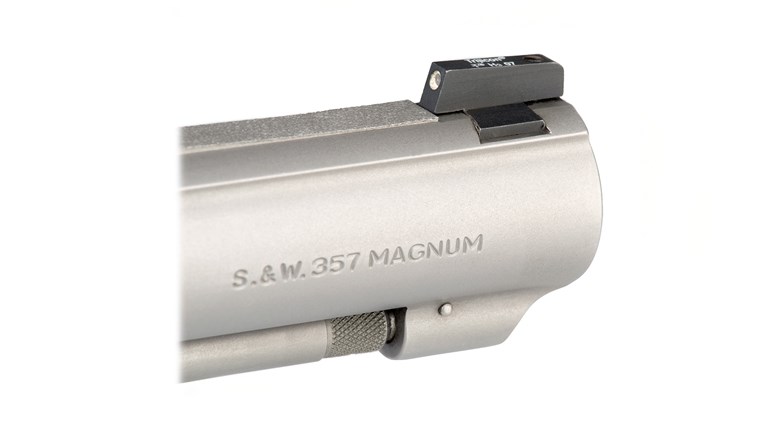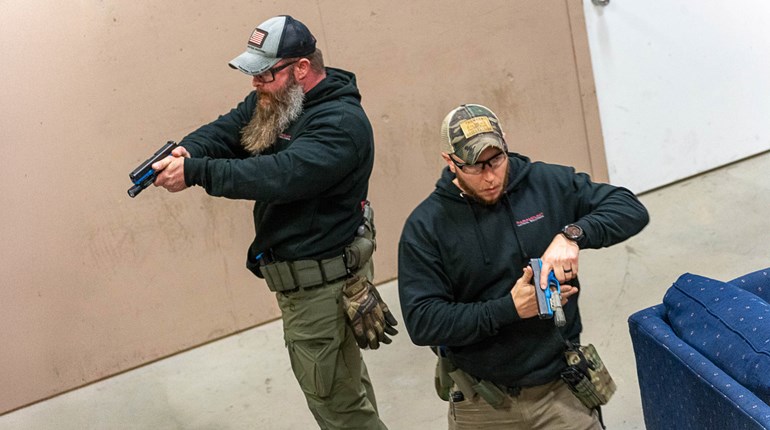
The Problem
You took an intermediate-level, skill-development class to improve your proficiency with the handguns you use for personal defense, local competitive events and recreational shooting. The instructor emphasized the fundamentals repeatedly throughout the two-day course, especially breathing. You understand breathing is important regarding shooting or any other physical activity, not to mention living life in general. But, to make the statement that improper breathing is the root of all that contributes to imperfect shooting—as this instructor did—caught your attention.
Since the other classes you had attended to this point spent more time on stance, grip, the use of the sights and proper operation of the trigger with perhaps a casual mention about breathing, you wonder if you are missing something. You are looking for an answer in simple terms that will help you to understand what is important in your quest to become a better shooter and where breathing fits into that equation.
The Solution
The answer is very simple but may have some additional considerations as the various applications are addressed.
In the simplest of terms, aim at the intended target with the sights (and therefore the muzzle, where the bullet exits the gun) stabilized with a minimum of movement, followed by the operation of the trigger to fire the gun with little to no effect on the sights as they relate to the target. That’s it. Full Stop.
So comes the question, what is so critically important about breathing as it pertains to shooting?
To make it as simple and understandable as I know how, we can divide breathing into two categories: conscious breathing and unconscious breathing.
Unconscious breathing can be interpreted as how we breathe every day just to sustain life. It is automatic, there is no conscious thought necessary to breathe in and out for normal respiration. It is something that takes place without having to think about it, like a person’s heartbeat. To put a little more meaning into the subconscious action of unconscious breathing, consider the fact that at times, when necessary, we hold our breath with no conscious thought when there is a reason not to breathe for a moment. Everyday examples are when we eat, drink or swallow. If we tried breathing as we were eating or drinking, we would choke, as there would be no discrimination of what was entering the esophagus or the trachea. In order to keep from choking we have to stop breathing while ingesting solids or liquids.
When shooting, the objective is to stabilize the muzzle on the target, hold it as still as possible for the short period of time needed to pull the trigger and fire the gun. Most people cease to breathe momentarily or breath very lightly when they attempt to become motionless, whether they are shooting or not. This phenomenon removes the negative effects of movement while shooting due to breathing. The mere concept of muzzle stability during trigger manipulation effectively removes the need to think about breathing when firing a precision shot.
Firing multiple shots, or a string of shots, may require taking a breath between shots or breathing within the string of shots at a time other than when the trigger is about to break a shot. In competitive shooting, depending on the specific discipline, the interval between breaths may be determined by the course of fire and the physical health of the shooter.
The important objective to keep in mind for maximum performance is to keep oxygenated blood flowing to the brain and to the eyes through the shot-delivery process. A tip when you are shooting competitively is inhaling through the nose when you are trying to minimize motion to the gun. The exhale can be through the nose or mouth, whichever is more comfortable for the shooter.
To steal a phrase from one of my industry friends when referencing breathing in a combat situation, “breathing is what you want to be doing once the gun battle is over.” Under the stress of a gunfight, it is unlikely that an individual will be devoting a lot of conscious thought to breathing, unless they have been taught and have practiced the techniques of combat breathing. Essentially, this involves a conscious inhale for several seconds, hold for a similar amount of time, exhale for several seconds followed by a pause for a similar amount of time before inhaling and starting the process over again. This takes mental fortitude, but helps with mental and physical performance in a stressful situation.
I suspect the instructor in question may have simply been giving students a gentle reminder that they need to remember to breathe when shooting. Of course, when it comes to shooting, the concept of proper breath control takes many paths, depending on the application. For example, it is of greater significance for long-range rifle shooting. As far as being a fundamental that trumps all others, that is one person’s opinion with which I am going to have to disagree. If the muzzle of the gun has the necessary stability to hit the target when the gun is fired, why would one be concerned whether the shooter was breathing or not if the objective of hitting the target is being met?




































